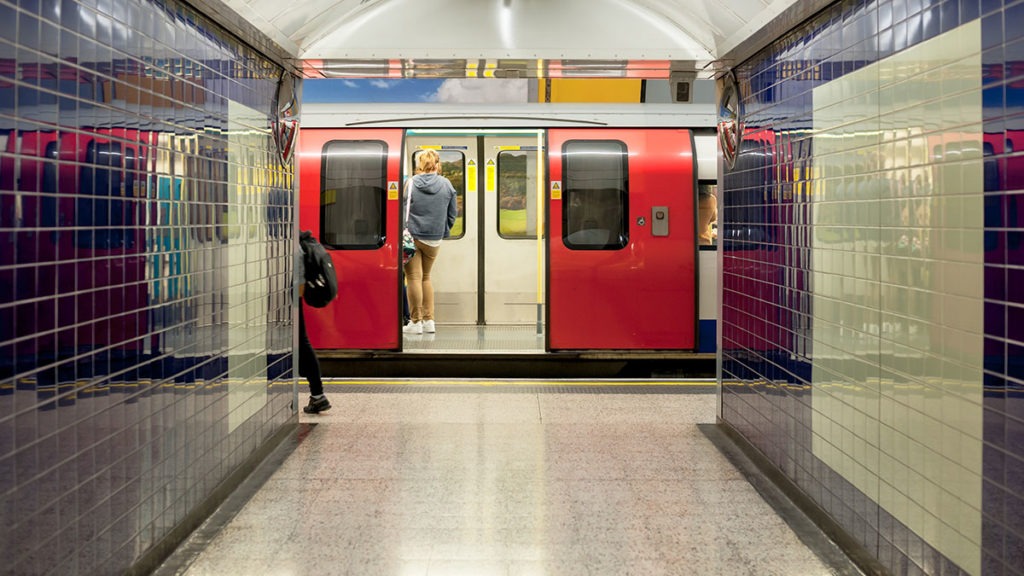On 7 March 1969, Queen Elizabeth II became the first, and so far only, reigning monarch to travel on the London Underground. She travelled a short distance between Victoria and Green Park as part of the official opening of the Victoria line, the first new line since the Central line opened in 1908 and a significant milestone in the evolution of London’s transport system during her 70 year reign.
The Victoria line initially ran between Walthamstow Central and Highbury & Islington, extending further South to Brixton in 1971. It came out of a need to relieve congestion on other underground lines as people began moving out to the suburbs and commuting into central London for work. It also improved connections across the city, creating a more direct route between north and south, significantly cutting travel times.
Since the opening of the Victoria line, London’s population has continued to grow and with it so has the need to adapt existing infrastructure to support an ever-expanding city. The last 12 months alone has seen the opening of the Northern line extension to Nine Elms and Battersea Power Station as well as a significant transformation of Bank tube station, which will increase the station’s capacity by 40% – an extraordinary feat of engineering which has involved the construction of 12 new escalators and more than a kilometre of new tunnel right under the heart of the City, delivered almost by keyhole surgery.
And then on Tuesday 17 May in the year of the Queen’s Platinum Jubilee Her Majesty found herself once again attending the opening of a new tube line, this time one named in her honour.
The Elizabeth Line opens to passengers this month. The line will have a phased opening, initially operating as three separate railways but by spring 2023 it will connect Reading and Heathrow Airport in the West to Shenfield and Abbey Wood in the East, passing through 35 other stations on its way and spanning over 100km.
Even though the project has involved a huge amount of civil engineering, in tunnelling under central London and the creation of new stations, the main feature of the Elizabeth Line is to join existing dots on the system, rather than adding destinations to the rail network. The line can move a huge number of people – the 1500 person capacity of its trains and the planned 24 trains per hour service frequency in the central section will achieve a ten per cent increase in the overall capacity of the underground network. By virtue of that capacity and the new connections between existing station locations, it will transform connectivity between areas of London and the wider region which have historically been remote from each other.
A GVA study commissioned by Crossrail in 2018 predicted that 90,599 new homes would be built along the route, that the value of existing housing within the vicinity of the new stations would rise by £10.6 billion and there would be over 4.4 million square feet of commercial space on offer.
The new line has already been a catalyst for regeneration in parts of central London. Overstation developments at Bond Street and Tottenham Court Road have created new office, retail and leisure spaces with other developments in the pipeline.
The property press has been full of fresh excitement over recent weeks at the expected impact on the central London office market and the rises in residential values along the line, but now is the time for local authorities to ensure that areas further out along the line benefit fully from the opportunities that the new connections present. Regeneration is not just about building new housing. It is about creating communities in which people can live and can live well. This means ensuring that there are more affordable homes, new schools, green spaces, community facilities and employment opportunities, genuinely improving life for all rather than simply moving deprivation from one place to another.
Working closely with local authorities the Crossrail project team has put a lot of focus into placemaking to improve the public realm around stations, delivering more green spaces and better connectivity. But whilst access to Elizabeth Line stations themselves is an important element of the wider benefit – further investment in local transport infrastructure and services connecting to those stations will be needed to maximise the transformational benefits that the Elizabeth Line can bring.
If you have any questions or would like to know more, please get in touch with Sarah Lees.

